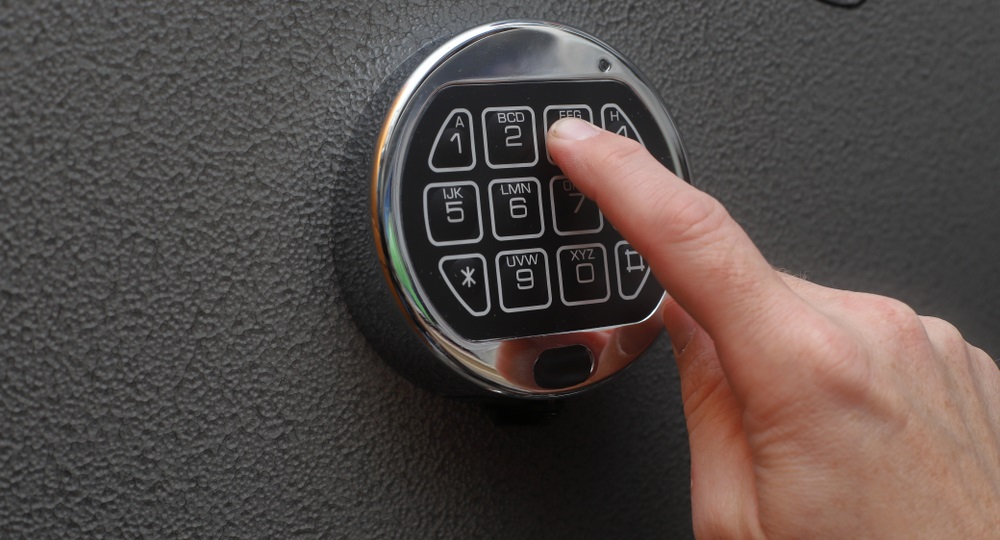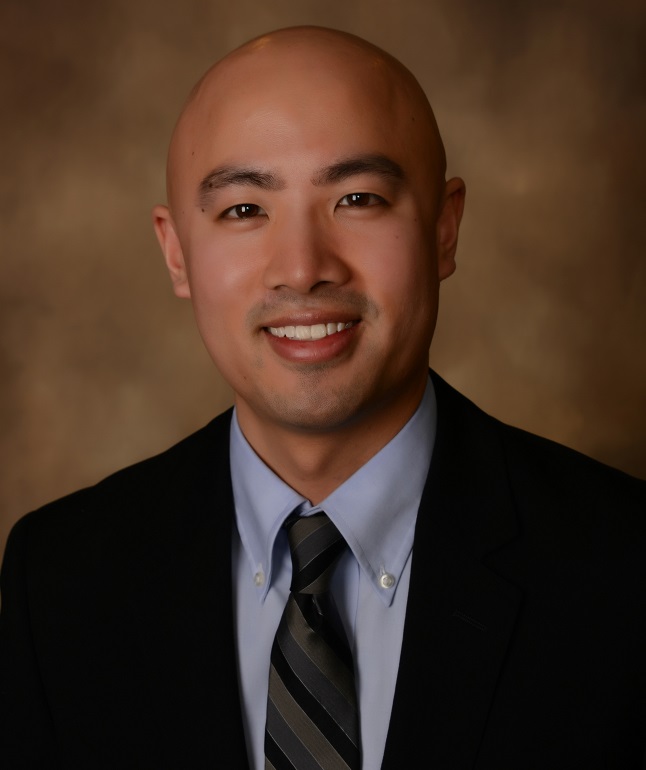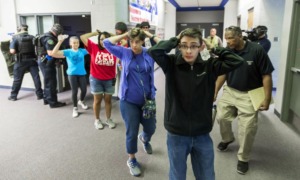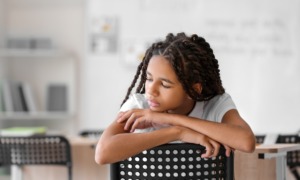 C5 MEDIA/SHUTTERSTOCK
C5 MEDIA/SHUTTERSTOCK
September usually marks the return to school, with teachers setting up classrooms and youth headed off on a new year of learning and growth. But 2020 has been anything but usual. In many parts of the country, learning has moved online as teachers set up virtual classrooms and youth engage from their bedrooms, kitchens and living rooms.
Parents are faced with balancing work and oversight of home learning; for some, this means new child care demands, while teleworking parents struggle with divided attention. Outside the home, other stressors include coronavirus, the upcoming election, economic uncertainty and protests for racial justice; Americans are grieving, frustrated and frightened.
For more information on Youth Gun Violence Prevention, go to
JJIE Resource Hub | Youth Gun Violence Prevention
Add the 2020 surge in gun sales — with an estimated 40% being first-time owners — and there’s the perfect recipe for a spike in youth firearm injuries and deaths. But there are things we can do to prevent this spike.
In the United States, injuries and deaths from firearms fall into three general buckets: self-inflicted (i.e., suicide), interpersonal (i.e., homicide) and unintentional (i.e., accidental). In youth age 19 and younger, interpersonal shootings account for the most deaths (56%), followed by suicide (39%). Only 3% of firearm-related deaths in youth are from “accidental” shootings.

Emmy Betz
But these raw numbers tell only part of the story, as firearm death rates vary by age, gender, race, geography and other factors. For example, age-adjusted firearm homicide death rates are eight times higher in black youth than white youth (8.45 versus 1.01 per 100,000). And age-adjusted firearm suicide death rates are over twice as high in rural versus urban youth (2.84 versus 1.34 per 100,000). There are also a far larger number of youth affected by the long-term physical and mental consequences of nonfatal firearm injuries, whether from surviving a shooting at school or daily violence in their communities.
Prevention of unintentional shootings among children is relatively straightforward, as it relies on secure home storage of weapons. Adults need to ensure that firearms are stored locked and inaccessible to youth; there are a range of storage options, from locking devices to large safes. New gun owners need to consider firearm storage when they make their purchase, as secure storage is a key tenet of responsible gun ownership.
More resources, funding needed
What about homicide and suicide? These are issues that are even more important in these troubled times, with heightened tensions at home and in the community.
Before COVID-19, our communities, especially those of color, were already dealing with an epidemic: youth homicide and firearm injuries. As the leading cause of death among Black youths, homicide has been the focus of community and health care preventive efforts for years. But the dramatic rise in homicide rates across major cities this summer has created an even greater sense of urgency for deliberate, comprehensive approaches to stopping the cycle of violence.

Benjamin Li
Community– and hospital-based violence intervention programs (HVIPs) work to intervene in and defuse acute situations of violent conflict while also preventing future violence through mentorship and intensive case management. HVIPs use culturally competent, trauma-informed care to mitigate the risk for violent injuries by directing resources toward individual medical (including mental health) and social needs.
Overall, resources and funding for youth firearm injury prevention are severely lacking, though in December 2019, Congress historically approved $25 million for research on gun violence. This will ideally result in the development and expansion of effective, evidence-based policies and initiatives for reducing gun violence, but is only a small push toward building the momentum needed.
For firearm suicide prevention, secure storage of home weapons is critical. Even teens who have training and experience in safe firearm handling can be at risk of suicide, given the heightened impulsivity of many teens. The stresses faced by teens — like online bullying, difficulty at school, break-ups with a romantic partner — can seem insurmountable to them, since they don’t have the life experience of adults to know that things will get better.
When a firearm is accessible in a moment of crisis and used in a suicide attempt, survival is unlikely, much less likely than when medications or another method are used. No parent wants to think that their child would kill themselves — but every year, thousands do. And while parents fear school shootings, suicide is far more common. Health care professionals, service providers, teachers and others who interface with parents can help educate them about the need to secure firearms at home and to get help if a youth is struggling.
Our youth deserve safe homes, safe communities and safe schools. Now more than ever — with millions of Americans working and learning at home and with millions of new gun owners — we need to work together and use a public health approach to reduce firearm injuries and deaths among our youth.
Emmy Betz is an emergency physician and researcher at the University of Colorado School of Medicine, where she leads the Firearm Injury Prevention Initiative. She also co-founded and leads the Colorado Firearm Safety Coalition, a collaboration between the firearm and suicide prevention communities.
Benjamin Li is an emergency physician and clinical research fellow at Denver Health Medical Center. His research focuses on violent injury prevention and social emergency medicine.






























